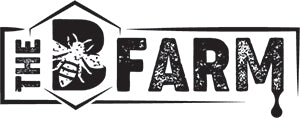Whether you’re a beginner beekeeper or an expert already managing a thriving operation, increasing your colony’s efficiency can lead to sweeter rewards. Explore these five ways to maximize your colony’s honey production so you can keep your bees healthy and productive.
1. Provide Ample Forage
Bees require access to nectar-rich flowers to produce honey. For areas with scarce forage, you can easily plant bee-friendly plants in a nearby field or even in your own backyard. Focus on nectar-heavy flowers like sunflowers, lavender, or clover that bloom throughout the season. Also, consider reaching out to local gardeners or community groups to collaborate on creating pollinator-friendly spaces.
2. Maintain Strong, Healthy Colonies
A strong colony is a productive colony, so regularly inspect your hives to spot early signs of pests or diseases like Varroa mites or Nosema. Make sure your bees have plenty of food available by supplementing them with sugar syrup, especially when nectar sources may run low. With this technique, you’ll help your bees bounce back in time for peak season.
3. Use Pol-Line Bees for Genetic Advantages
Pol-line honeybees are specifically bred for their resistance to diseases like Varroa and their ability to maintain high productivity levels. By using Pol-line bees, you can develop a resilient hive with increased honey yields. Additionally, selecting stronger genetics for your hive will help you minimize losses while maximizing production.
4. Optimize Hive Management Techniques
When it comes to hive placement and setup, strategy is everything. Place your hives in sunny, well-ventilated areas with ample wind protection. During inspections, watch for signs of overcrowding, as this can lead to swarming and lower productivity. When necessary, add extra supers to give your bees ample room to store honey and prevent congestion.
5. Harvest Honey Thoughtfully
During harvest time, proper timing and technique can make a big difference. Wait until honey is fully capped (around 80 percent capped cells per frame) to ensure it’s properly cured and at the correct moisture level.
If you harvest too much too soon, you can end up with high-moisture honey that is less shelf-stable. After harvesting honey, always leave behind enough to help your bees thrive during the colder months.
Put These Tips Into Action
From improving forage availability to using disease-resistant Pol-line bees, these five ways to maximize your colony’s honey production can lead to substantial gains. Assess your current practices, invest in your bees’ health, and adjust where needed.
Are you ready to see increased yields this season? Head over to The B Farm to get everything you need to build a successful colony today.
